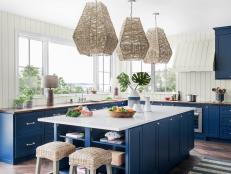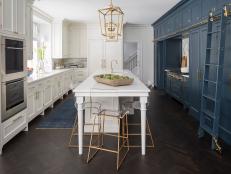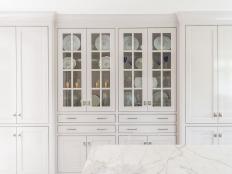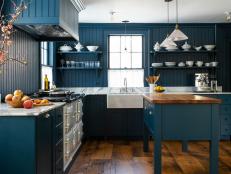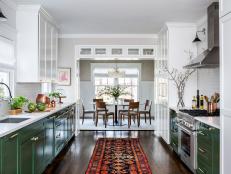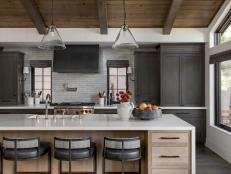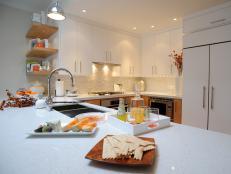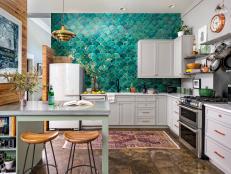Galley Kitchen Lighting Ideas

Named for the small, efficient kitchens originally found on ships or trains, galley kitchens often run the risk of being cramped, dimly lit affairs—which is why anyone looking to spruce up or add one to their home might want to peruse galley kitchen lighting ideas.
The right lighting design can go a long way toward opening up a small space, not to mention making it a much more pleasant and efficient place to cook, clean and converse.
Galley kitchen layouts have some trademarks, and first among them is a design that features two parallel walls with a narrow passage between them. This efficient design allows cooks to simply turn around to access features on one side or the other—and generally, galley kitchens separate their task areas by side. One side will feature cooking and storage implements and appliances, while the other will feature sinks and other cleaning resources, as well as further storage.
To create a galley kitchen lighting design that's both attractive and effective, you'll want to focus on three types of lighting: ambient lighting, accent lighting and task lighting.
First up is ambient lighting, which will illuminate the entire galley kitchen space and scare away any of the shadows that can often plague any small, enclosed space—and which are particularly irksome for anyone trying to prepare a meal. Ambient lighting refers to the main lighting scheme for the space, and it usually starts with ceiling lighting. For a galley kitchen, ceiling lights that run the entire length of the space are usually a good investment—a single light source may not be enough to reach the various nooks and crannies of a small space with lots of overlapping features and fixtures. Track lighting may be a good solution here, particularly for contemporary or modern designs, while more traditional pendant lighting can work for designs that are more historical or vintage-inspired.
Next up is task lighting, which will cover the galley kitchen's work stations and makes cooking, cleaning and food preparation easier and safer. Task lighting is carefully placed to light individual spaces like the sink, stovetop, cutting board or other frequently used areas of the galley kitchen.
Finally, accent lighting can add tremendous ambiance to a galley kitchen, and it can further brighten and visually expand the space. Examples of accent lighting are fixtures on top of wall cabinets that serve to illuminate the ceiling, heightening the space, or at the base of the cabinets, adding depth. The secondary goals of accent lighting, beyond accentuating the more attractive features of the galley kitchen, is to distract from any of the more cramped or crowded areas of the space, drawing the eye up or down to stretch the space visually and emphasize an open and comfortable feel.









